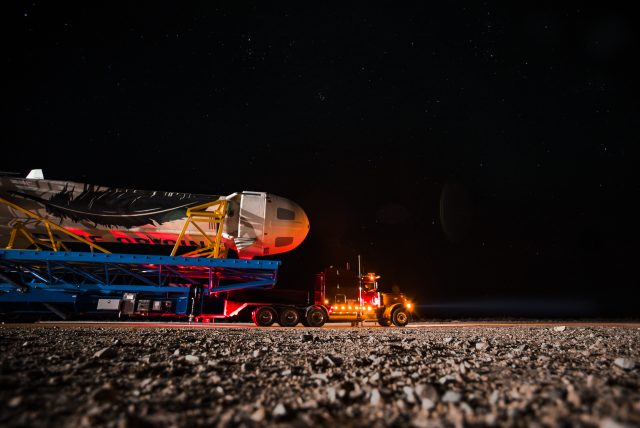
The barriers to reusable rockets keep falling. Late Friday night Blue Origin posted a new video of its New Shepard rocket booster flying into space a second time and then landing safely again back in West Texas. This marked the first time a rocket booster has been flown into space, landed, and re-flown again.
Friday's launch to an altitude of 101.7km, which is just above the Karman line considered to be the boundary of outer space, follows a similar flight of the same booster in November. A month later, in December, SpaceX landed a much larger booster, the first stage of its Falcon 9 rocket, back at Florida for the first time. But even as SpaceX has begun testing that rocket, which will likely not fly again, Blue Origin has moved ahead to a second flight.
The rivalry between Blue Origin's Jeff Bezos and SpaceX's Elon Musk is spurring the race toward reusability, with the aim of driving down rocket costs so that more people and hardware can be launched into space. As the new video's tagline says, "You can't get there by throwing the hardware away." This may be a subtle dig at NASA, which is building an expensive, massive new rocket, the Space Launch System, which is entirely expendable.
Through reusability, the new space companies want to dramatically cut launch costs to realize ambitious visions. Blue Origin's goal is millions of people living and working in space. SpaceX wants to colonize Mars.
After this week's successful reuse of the New Shepard rocket, Bezos explained in a blog post why he had opted for rockets rather than a winged vehicle to open up access to space.
"Though wings and parachutes have their adherents and their advantages, I’m a huge fan of rocket-powered vertical landing," he wrote. "Why? Because — to achieve our vision of millions of people living and working in space — we will need to build very large rocket boosters. And the vertical landing architecture scales extraordinarily well."
Blue Origin has designed its New Shepard with two main components, a pressurized crew capsule and a propulsion module, or booster, powered by a single BE-3 liquid hydrogen engine. The company intends for the vehicle to fly autonomously, and it can carry as many as six passengers. It also plans to begin testing of a much more powerful engine, the BE-4, later this year.
reader comments
133